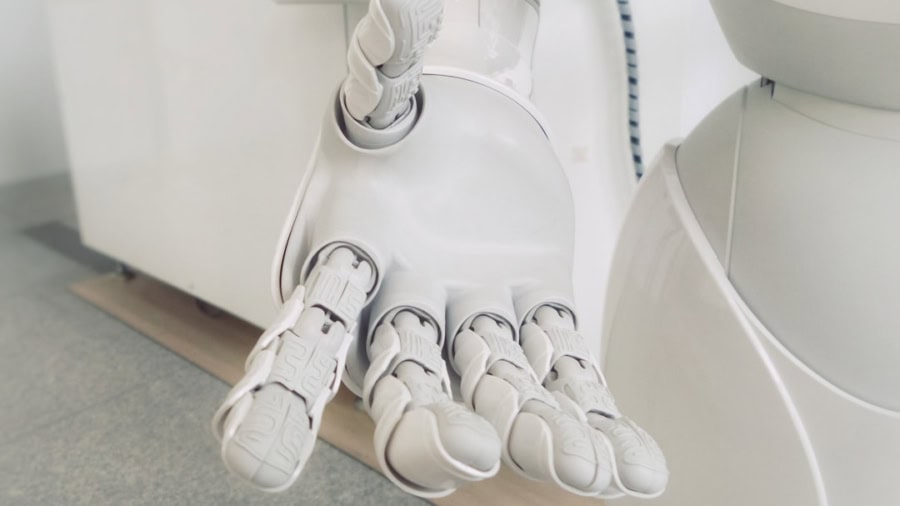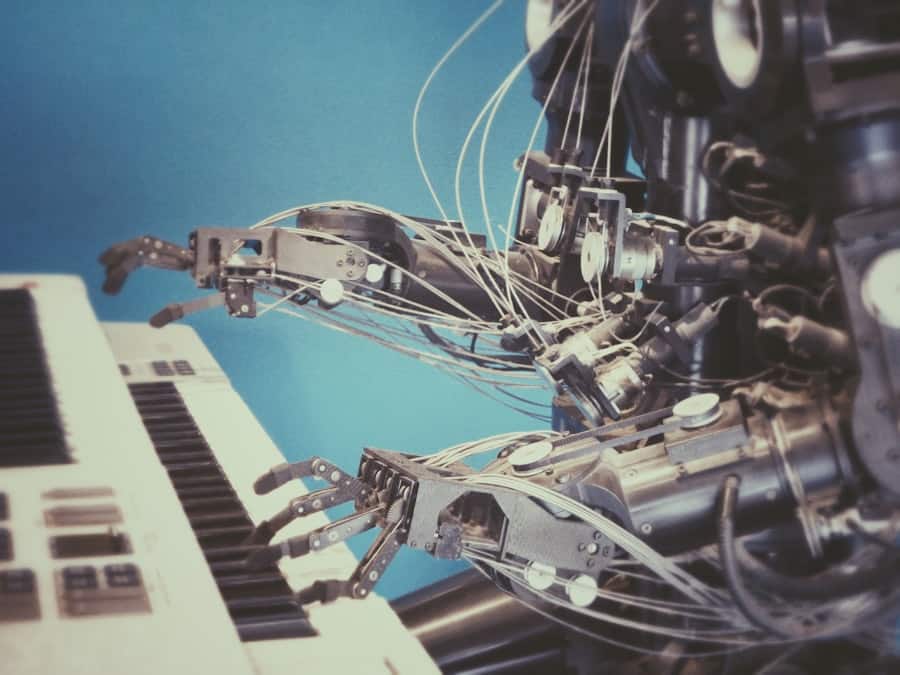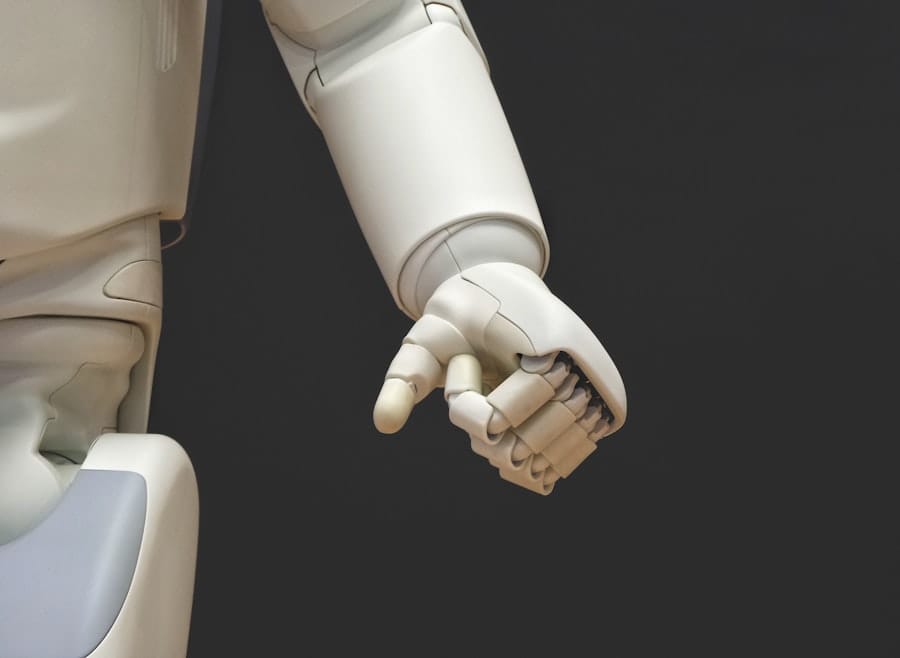Computer vision has emerged as a pivotal technology in the realm of industrial automation, particularly in the navigation of robots within complex environments. This field of study focuses on enabling machines to interpret and understand visual information from the world, mimicking human visual perception. In industrial settings, where precision and efficiency are paramount, the integration of computer vision into robotic systems has revolutionized how these machines operate.
By equipping robots with the ability to perceive their surroundings, manufacturers can enhance productivity, reduce errors, and streamline operations. The evolution of computer vision technologies has been driven by advancements in machine learning, artificial intelligence, and sensor technologies. These developments have allowed robots to not only navigate their environments but also to make informed decisions based on visual data.
For instance, a robot equipped with a camera and sophisticated algorithms can identify obstacles, recognize objects, and even assess the quality of products on a production line. This capability is essential in dynamic industrial environments where conditions can change rapidly, necessitating real-time adjustments to navigation strategies.
Key Takeaways
- Computer vision plays a crucial role in industrial robot navigation by enabling robots to perceive and understand their environment.
- The importance of computer vision in industrial robot navigation lies in its ability to enhance safety, accuracy, and efficiency in various industrial processes.
- Applications of computer vision in industrial robot navigation include object detection, localization, path planning, and quality control in manufacturing.
- Challenges and limitations of computer vision in industrial robot navigation include environmental variability, occlusions, and real-time processing requirements.
- Advancements in computer vision technology for industrial robot navigation, such as deep learning and 3D vision, are driving improvements in robot perception and decision-making capabilities.
The Importance of Computer Vision in Industrial Robot Navigation
The significance of computer vision in industrial robot navigation cannot be overstated. One of the primary advantages is the enhancement of operational efficiency. Robots that can visually perceive their environment are better equipped to navigate complex layouts, avoid obstacles, and optimize their paths.
This leads to reduced downtime and increased throughput in manufacturing processes. For example, a robotic arm in an assembly line can adjust its movements based on the position of components, ensuring that it operates smoothly without collisions or delays. Moreover, computer vision contributes to improved safety in industrial settings.
Robots equipped with vision systems can detect human presence and adjust their actions accordingly, minimizing the risk of accidents. This is particularly crucial in environments where humans and robots work in close proximity. By utilizing computer vision for navigation, companies can create safer workplaces while maintaining high levels of productivity.
The ability to monitor surroundings in real-time allows robots to respond to unexpected changes, such as a person entering their workspace or an object falling onto their path.
Applications of Computer Vision in Industrial Robot Navigation
The applications of computer vision in industrial robot navigation are diverse and continually expanding. One prominent application is in automated guided vehicles (AGVs), which are used extensively in warehouses and manufacturing facilities. These vehicles rely on computer vision to navigate through aisles, avoid obstacles, and transport materials efficiently.
By using cameras and image processing algorithms, AGVs can create maps of their environment and adapt their routes based on real-time visual input.
Robots equipped with computer vision systems can inspect products for defects or inconsistencies during production.
For instance, in the automotive industry, robots can analyze the surface quality of car parts by capturing high-resolution images and using machine learning algorithms to identify flaws. This not only enhances product quality but also reduces the need for manual inspection, allowing human workers to focus on more complex tasks that require cognitive skills.
Challenges and Limitations of Computer Vision in Industrial Robot Navigation
Despite its numerous advantages, the implementation of computer vision in industrial robot navigation is not without challenges. One major limitation is the variability of lighting conditions in industrial environments. Changes in illumination can significantly affect the performance of vision systems, leading to misinterpretation of visual data.
For example, a robot navigating a warehouse may struggle to identify objects if the lighting fluctuates due to natural light entering through windows or if there are shadows cast by machinery. Additionally, the complexity of real-world environments poses another challenge. Industrial settings often contain cluttered spaces with numerous objects that can obstruct a robot’s view or create confusion in object recognition algorithms.
The presence of reflective surfaces or transparent materials can further complicate visual perception. To address these issues, researchers are exploring advanced techniques such as multi-sensor fusion, where data from various sensors—such as LiDAR and ultrasonic sensors—are combined with visual data to enhance navigation accuracy.
Advancements in Computer Vision Technology for Industrial Robot Navigation
Recent advancements in computer vision technology have significantly improved the capabilities of robots in industrial navigation. One notable development is the use of deep learning algorithms for image recognition and processing. These algorithms enable robots to learn from vast datasets, allowing them to recognize objects and patterns with remarkable accuracy.
For instance, convolutional neural networks (CNNs) have been employed to train robots to identify specific components on an assembly line, facilitating more efficient sorting and handling processes. Another area of progress is the miniaturization and enhancement of camera technologies. High-resolution cameras with advanced features such as depth sensing and 3D imaging have become more accessible for industrial applications.
These cameras provide robots with richer visual information, enabling them to navigate complex environments more effectively. Furthermore, improvements in processing power have allowed for real-time image analysis, ensuring that robots can make instantaneous decisions based on their visual input.
Integration of Computer Vision with Other Technologies in Industrial Robot Navigation
Enhanced Navigation with SLAM
One prominent example is the combination of computer vision with simultaneous localization and mapping (SLAM) techniques. SLAM allows robots to create maps of their environment while simultaneously tracking their own position within that space. When integrated with computer vision, SLAM systems can utilize visual data to improve mapping accuracy and enable more robust navigation strategies.
Autonomous Decision-Making with AI
The fusion of computer vision with artificial intelligence (AI) has opened new avenues for autonomous decision-making in robots. AI algorithms can analyze visual data to identify patterns and make predictions about future states of the environment. For instance, a robot navigating a factory floor could use AI-driven insights to anticipate potential obstacles based on historical data and adjust its path proactively.
Improved Efficiency and Autonomy
This level of integration not only enhances navigation efficiency but also empowers robots to operate autonomously in dynamic settings.
Future Outlook of Computer Vision in Industrial Robot Navigation
The future outlook for computer vision in industrial robot navigation is promising, with ongoing research and development poised to drive further innovations. As industries increasingly adopt automation technologies, the demand for advanced navigation solutions will continue to grow. Future advancements may include enhanced algorithms that improve object recognition under varying conditions and more sophisticated sensor technologies that provide richer environmental data.
Moreover, the rise of Industry 4.0—a movement towards smart manufacturing—will likely accelerate the integration of computer vision into broader automation frameworks. As factories become more interconnected through the Internet of Things (IoT), robots equipped with computer vision will be able to communicate and collaborate more effectively with other machines and systems. This interconnectedness will facilitate real-time data sharing and decision-making, leading to even greater efficiencies in industrial operations.
Conclusion and Implications for the Industry
The implications of computer vision for industrial robot navigation are profound and far-reaching. As this technology continues to evolve, it will play a critical role in shaping the future of manufacturing and automation. Companies that embrace these advancements stand to gain significant competitive advantages through improved efficiency, enhanced safety measures, and superior product quality.
In summary, the integration of computer vision into industrial robot navigation represents a transformative shift in how industries operate. By enabling robots to perceive and interpret their environments visually, businesses can optimize their processes and adapt to changing conditions with agility. As research progresses and new technologies emerge, the potential applications for computer vision will expand even further, paving the way for a new era of intelligent automation in industrial settings.
In addition to exploring the role of computer vision in industrial robot navigation, readers may also be interested in learning about the best tablets for kids in 2023. With technology becoming increasingly integrated into education and entertainment for children, having the right device can make a big difference. Check out the article for recommendations on the top tablets for kids this year.
FAQs
What is computer vision?
Computer vision is a field of artificial intelligence that enables computers to interpret and understand the visual world. It involves the development of algorithms and techniques for machines to gain high-level understanding from digital images or videos.
What is industrial robot navigation?
Industrial robot navigation refers to the ability of robots to move and operate within industrial environments. This includes tasks such as navigating through factory floors, avoiding obstacles, and reaching specific locations to perform various operations.
How does computer vision contribute to industrial robot navigation?
Computer vision plays a crucial role in industrial robot navigation by providing robots with the ability to perceive and understand their surroundings. This includes tasks such as object recognition, obstacle detection, and localization, which are essential for safe and efficient navigation within industrial settings.
What are some applications of computer vision in industrial robot navigation?
Some applications of computer vision in industrial robot navigation include autonomous material handling, quality inspection, assembly line operations, and warehouse management. Computer vision enables robots to navigate and perform tasks with precision and accuracy in dynamic industrial environments.
What are the benefits of using computer vision for industrial robot navigation?
The use of computer vision for industrial robot navigation offers several benefits, including improved safety, increased efficiency, reduced human intervention, and the ability to adapt to changing environments. It also enables robots to perform complex tasks with greater accuracy and reliability.



